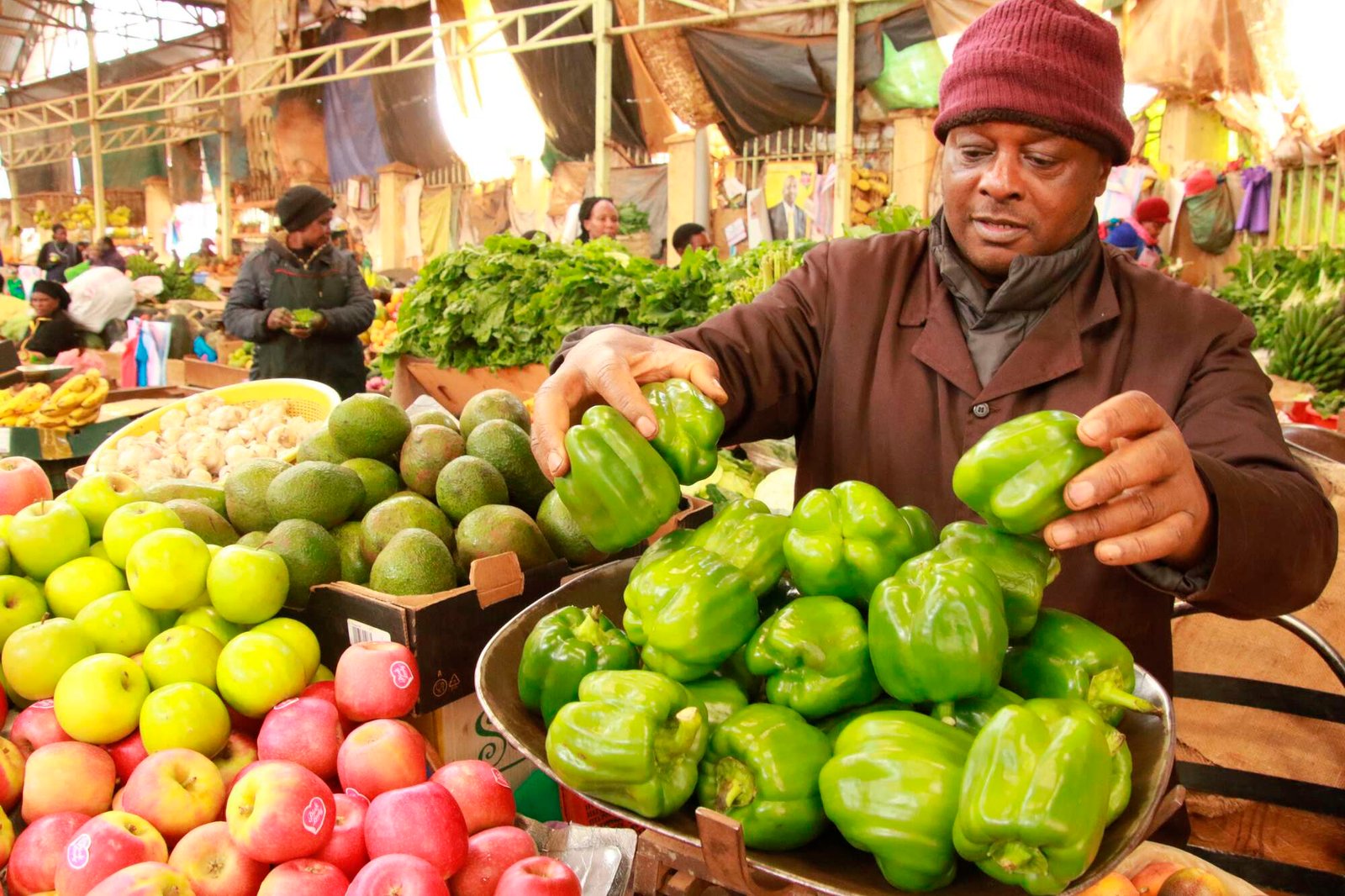[ad_1]
Economy
Kenya’s economic growth slows to 5.3pc in quarter 1
Tuesday July 04 2023
Kariuki Gatiba arranges groceries at his stand at Nyeri town market on May 3, 2023. PHOTO | JOSEPH KANYI | NMG
Kenya’s economic growth for the first three months of the year slowed on the back of deceleration in most key sectors amid a recovery in farming activities, the statistics agency announced Tuesday.
The economy expanded 5.3 percent in the first quarter compared with 6.2 percent in a similar period last year, Kenya National Bureau of Statistics said.
The pace of growth in the gross domestic product (GDP) — a measure of national economic output adjusted to inflation— was slowed by reduced activity in key economic sectors such as manufacturing, construction and transportation.
Activities in Kenya’s mainstay sector of agriculture, nonetheless, rebounded to grow 5.8 percent compared with a 1.7 percent contraction in the same period a year ago.
“The significantly improved performance of the sector was attributable to favourable weather conditions that led to enhanced production, especially that of food crops during the period under review,” KNBS said in the quarterly GDP report. “The performance was evident in the significant increase in export of vegetables and fruits recorded during the quarter in review.”
Despite the overall growth in farming output relative to the same quarter last year, producers of tea, coffee, sugarcane and milk posted subdued production on the back of a biting drought from the previous quarters.
Milk deliveries to processors fell 15.7 percent to 166.5 million litres, tea by 13.0 percent to 118,100 metric tonnes, coffee volumes by 5.4 percent to 11,284.9 metric tonnes, while sugarcane deliveries to millers rose a marginal 0.4 percent to 2.17 million tonnes.
Read: Agriculture drops four quarters in a row
Inflation pressure
KNBS said expansion in economic activity was further dragged by higher inflation — a gauge for the cost of living over 12 months — which averaged 9.13 percent in the January-March period compared with 5.34 percent in the corresponding period in 2022.
This was majorly driven by spikes in food and energy prices amid a weakening currency, which shed 11.1 percent against the US dollar, the reserve currency in international trade.
The Central Bank of Kenya, primarily tasked with stabilisation of demand-driven prices, increased benchmark interest rates to 9.50 percent in the review period from 8.75 percent to manage expectations on a further rise in the cost of living measure.
Read: CBK cuts 2023 growth forecast to 5.8pc on drought
Increasing the key lending rate makes borrowing more expensive as banks use the rate as a base on which they load their margins when pricing loans. The growth in benchmark central bank rate, technically known as [monetary] policy tightening, is expected to prompt consumers to cut or postpone expenditure on luxurious goods, thus helping rein in elevated inflationary pressures from the demand side.
Sectoral performance
Elevated inflation amid the depreciating shilling hurt output in the manufacturing sector, which significantly relies on foreign markets for supplies.
Growth in the sector slowed to 2.0 percent from 3.8 percent in the first quarter of 2022, supported by the production of bakery products like bread as well as the processing and preservation of fish.
Activities in the transportation and storage sector also slowed to 6.2 percent from 7.7 percent the year before, helped by railway services amid high fuel costs, which hurt fares for road transport.
Growth in construction, which is largely driven by public investment in infrastructural projects, decelerated by half to 3.1 percent compared with 6.0 percent previously on the back of reduced cement consumption.
Other sectors which posted slowed expansion include financial and insurance services at 5.8 percent from 17.0 percent, on the rising cost of borrowing and ICT at 8.7 percent from 9.0 percent.
Accommodation and food service activities —whose real value added to the economy is yet to rebound to pre-Covid-19 pandemic levels—grew 21.5 percent compared with 40 percent, the KNBS report states.
“The accommodation and food services activities sector has been growing steadily owing to the dissipation of the effects of the Covid-19 pandemic that consequently led to improved economic environment in most tourist destinations,” KNBS said.
“The visitor arrivals through the two major airports (Jomo Kenyatta and Moi international airports) rose by 50 percent from 225,321 in the first quarter of 2022 to 337,937 visitors in the quarter under review.”
[ad_2]
Source link



